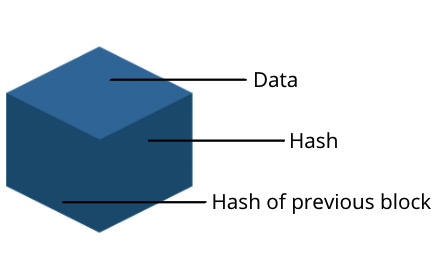You might hear these keywords over the past years! But, again, these terms have been extremely popular (again) since Elon Musk tweeted he planned to accept cryptocurrency as their payment method. The sentiments were very positive and impacted the market by increasing the bitcoin value by 20% or even more and hitting a record high of $64,829 in mid-April.
But, along with Musk’s announcement to hold back the plan, the market has been a rollercoaster. It’s always a volatile market, and pretty hard to manage the risks. Before further discussion, you should know the basic fundamental of this type of investment. Blockchain. The technology itself.

In this post, we share a simple explanation of Blockchain, the technology that enables cryptocurrency such as Bitcoin, Dogecoin, Binance Coin, etc.
In simple words, a blockchain is a chain of blocks that contains information. Basically, it is like a distributed digital ledger that is completely open to anyone. What makes blockchain interesting is the information is collected together in groups, or we call it “blocks”. Thus, once some data has been recorded inside a block, it will chain onto the previously filled block. So, it will form a chain of data known as the “blockchain,” which becomes very difficult to change.

So, how does it work?
Each block contains three essential elements: the data, hash, and hash of the previous block.

- Data depends on the type of blockchain. In this case, let’s say Bitcoin block stores details about the transaction details such as sender information, receiver, and amount of coins. Once it created, the hash is being calculated.
- Hash is a unique identifier or blockchain “fingerprint”. Every block has a unique code, thus once information is changed inside the block, it will change the hash as well. Hash is very important to track any changes in the blockchain.
- Hash of the previous block. A block of information containing the address (hash) of the previous block. Just like the unique hash on each block, the purpose of the previous hash is to detect changes in the block. Thus, if a piece of information in a block changed, it will affect the hash of the block and the next blocks (the rest of the chain).
Here is the illustration:

Thus, if the Hash changes, it’s no longer the same block. Changing a single block will make all following blocks invalid.
The concept of hashes helps the digital ledger secure! However, it’s not enough because a computer and machine these days could solve this algorithm fast. Thus, to prevent fraud or tampering, there’s a system called proof-of-work. As mentioned before, blockchain is a digital ledger that is distributed to anyone, it’s decentralized. A consensus of the network will verify if the information of a blockchain is valid or invalid.
So, how can we apply this blockchain?

Until today, blockchain is still evolving. The concept of technology could help a lot of industries and mass-scale activities. Most of the time time, we would hear it often in the financial industry such as the growth of cryptocurrency, but another example is to implement blockchain in ways to help society such as recording votes in democratic elections, medical records systems, generating smart contracts, up to collecting taxes.
Conclusion
Why do we like blockchain? But, why others don’t like it? We would like to say there’s still a lot of reasons to be asking. Blockchain is not a new technology, it has been around since the 90s. Blockchain is more than Bitcoin or other cryptocurrencies. It is a decentralized digital ledger that is distributed and opened to anyone. The records of the transactions don’t need a third-party authorization, which generates the most efficient and low-cost process. By utilizing blockchain, it gives the users transparency, a reliable data security system that is hard to tamper with, and the most accurate verification with less (or no) human error. However, these benefits might be a threat for some people to deal with. Other than that, many people believe we will need to apply blockchain technology in the near future.
